Recent Posts
Common Signs of Water Damage in Your Home
6/12/2024 (Permalink)
 Here are a few common signs of water damage in your home.
Here are a few common signs of water damage in your home.
Water damage can be a serious problem for homeowners, leading to costly repairs and potential structural issues if left unaddressed. Detecting water damage early is crucial to prevent further damage and minimize the impact on your home. In this blog, we will discuss some common signs of water damage in your home that you should be aware of.
Discoloration and Stains on Walls and Ceilings
One of the most apparent signs of water damage is discoloration or staining on walls and ceilings. Look for areas that appear darker, yellowish, or have watermarks. These stains often indicate prolonged exposure to moisture and can be indicative of leaks or other water sources behind the wall or above the ceiling.
Mold and Mildew Growth
The presence of mold and mildew is a clear indication of water damage in your home. Mold thrives in moist environments and can quickly spread if not addressed promptly. Look for visible signs of mold growth, such as black spots or a musty odor, particularly in areas with high humidity, such as bathrooms, basements, or areas affected by previous water damage.
Warped or Buckled Flooring
Water damage can cause flooring materials like wood and laminate to warp or buckle. If you notice unevenness or a spongy feeling when walking on your floors, it may indicate water damage beneath the surface. Pay close attention to areas near water sources, such as bathrooms, kitchens, or laundry rooms, where leaks are more likely to occur.
Damp or Musty Odor
Persistent, damp, or musty odors in your home can be a sign of hidden water damage. If you notice these odors even after cleaning and airing out your home, it could indicate the presence of moisture behind walls, under floors, or in other concealed areas. Investigate the source of the smell to identify any underlying water damage issues.
Peeling or Bubbling Paint
Excessive moisture can cause paint to peel, bubble, or blister. If you notice paint that is flaking or bubbling away from the surface, it may indicate water damage underneath. This can occur due to leaks or seepage from damaged plumbing, roofs, or windows. Addressing the underlying cause of the moisture is essential to prevent further damage and peeling.
Sagging or Stained Drywall
Water damage can cause drywall to become soft, sag, or develop stains. If you see drywall that appears swollen, discolored, or shows signs of bubbling, it may be a result of water infiltration. Sagging or bulging areas often indicate that water has been absorbed, compromising the integrity of the material.
Increased Water Bills
Unexpectedly high water bills could be a potential sign of water damage. A sudden increase in water usage may indicate an undetected water leak in your plumbing system. Monitor your water bills closely and investigate any significant changes to identify possible water damage issues.
Being aware of the common signs of water damage in your home can help you detect and address issues before they escalate. If you notice any of these signs, it is important to act promptly to prevent further damage and protect your home. If you require professional assistance with water damage restoration, contact SERVPRO® for reliable and expert restoration services.
The Role of SERVPRO in Storm Damage Recovery
5/15/2024 (Permalink)
 In this blog, we'll explore the role of SERVPRO in storm damage recovery.
In this blog, we'll explore the role of SERVPRO in storm damage recovery.
When your home is affected by storm damage, it can be a devastating and overwhelming experience. From high winds and heavy rainfall to flash floods and hailstorms, storm damage can cause significant destruction to your property, leading to costly repairs and restoration. Fortunately, you don't have to handle storm damage recovery on your own. SERVPRO® is a trusted leader in storm damage restoration services, providing swift and efficient restoration solutions to homeowners. In this blog, we'll explore the role of SERVPRO in storm damage recovery.
Emergency Response
Storm damage can strike at any time, leaving you with little time to react. That's where SERVPRO comes in. Our team of experts is on-call 24/7, ready to respond to storm damage emergencies with efficient and effective solutions.
After a storm, SERVPRO ensures that our team arrives on-site quickly to assess the damage and take necessary steps to minimize further damage. Our rapid response time ensures that the restoration process can begin sooner, resulting in a faster recovery for homeowners.
Comprehensive Assessment
To provide effective storm damage restoration services, a comprehensive assessment is essential. SERVPRO's experts have the training and knowledge required to examine all aspects of storm damage, including water damage, wind damage, hail damage, and more.
After an assessment, SERVPRO's team develops a personalized restoration plan that addresses all aspects of the damage, including hidden damage repair and cleanup necessary to restore your home to its pre-damage state.
Structural Repairs
Storm damage often results in significant structural damage to homes, including damaged roofs, walls, foundations, and structural integrity issues. SERVPRO's team has the experience, knowledge, and technology to address these issues promptly and efficiently.
We utilize state-of-the-art equipment and tools, including tarping and board-up services, to prevent further damage, and repair damage quickly. Our team also coordinates with licensed contractors to execute all necessary structural repairs in a timely and effective manner.
Water Extraction and Drying
Water damage is a common result of storm damage, particularly in situations of flooding or heavy rainfall. SERVPRO's team has the expertise to handle all aspects of water damage restoration, including water extraction, drying, and dehumidification.
We use advanced equipment, such as air movers and dehumidifiers, to remove moisture and promote rapid drying throughout your home. Our team utilizes moisture monitoring technology to track progress and ensure that the affected areas of your home are thoroughly dry before the restoration process continues.
Restoration and Cleaning
After all necessary repairs and restoration are complete, SERVPRO's team moves on to the final stage of storm damage recovery – restoration and cleaning. Our team utilizes specialized cleaning methods to clean and disinfect your home, ensuring that it is safe and habitable.
We also handle debris removal, restoration of your furniture and other possessions, and odor removal to bring your home back to its pre-damage condition.
Conclusion
Storm damage can cause significant destruction to your home, and recovering from it can be challenging. SERVPRO's team of experts is equipped to handle all aspects of storm damage restoration, including emergency response, comprehensive assessment, structural repairs, water extraction, drying, restoration, and cleaning.
Our team is committed to providing fast and efficient restoration services, minimizing the time it takes for you to return to your home. At SERVPRO, we strive to alleviate the stress and uncertainty of storm damage recovery, providing peace of mind to homeowners. Contact SERVPRO for all your storm damage restoration needs, and we'll provide the expert assistance you need to restore your home to its pre-damage condition.
Proper Disposal of Ashes from Fireplaces and Wood Stoves
4/17/2024 (Permalink)
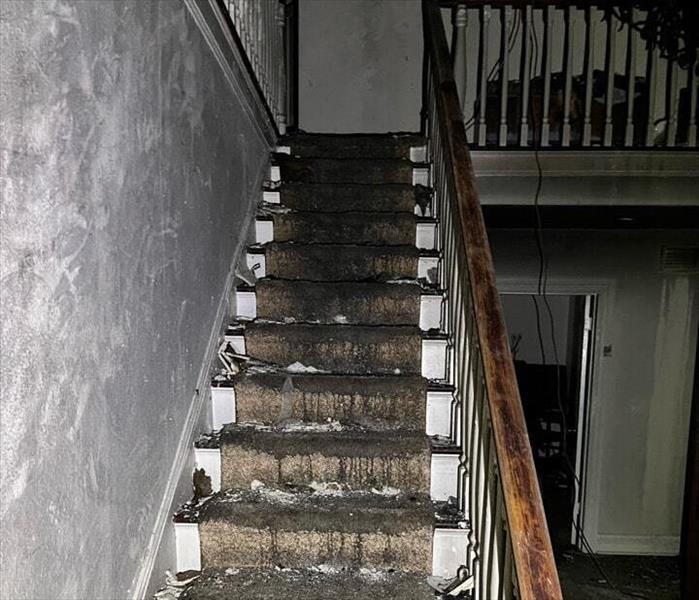 In this blog, we will explore the necessary steps for safely disposing of ashes from fireplaces and wood stoves.
In this blog, we will explore the necessary steps for safely disposing of ashes from fireplaces and wood stoves.
Fireplaces and wood stoves bring warmth and ambiance to our homes during the colder months. However, it is crucial to know how to properly dispose of ashes to prevent the risk of fire damage and protect personal belongings. In this blog, we will explore the necessary steps for safely disposing of ashes from fireplaces and wood stoves. By following these guidelines, you can minimize the risk of accidental fires and potential damage to your property.
Allow Sufficient Cooling Time
Before attempting to remove ashes, it is essential to ensure they are completely cooled. Hot or warm ashes can easily ignite surrounding flammable materials, causing fire damage or smoke damage to your home and personal belongings. Allow the ashes to cool for at least 24 hours before handling them.
Use Protective Gear
When dealing with ashes, protect yourself by wearing heat-resistant gloves, goggles, and a dust mask. This protective gear will minimize the risk of skin contact, eye irritation, and inhalation of ash particles. Prioritize safety to prevent any potential health hazards.
Utilize a Metal Ash Container
Choose a metal container with a tight-fitting lid to store ashes safely. Metal containers are non-flammable and help contain any residual heat from the ashes. Avoid using plastic or cardboard containers, as they can melt or catch fire. Place the metal ash container on a non-combustible surface such as concrete or bare ground.
Carefully Transfer Ashes
Using a metal shovel or scoop, gently transfer the cooled ashes into the metal ash container. Be cautious to avoid stirring them up to minimize ash particles in the air. Place the lid securely on the container when finished to prevent ash spillage during transportation.
Store Ashes Outdoors
Due to the potential for residual heat, it is essential to store the ash container outdoors, away from flammable materials. Choose an area that is protected from wind and moisture. Never store ash containers on a wooden deck or porch, as this increases the risk of fire damage.
Dispose of Ashes Properly
When disposing of ashes, it is advisable to contact your local waste management or municipality for specific guidelines. Some communities may provide designated ash collection bins or have specific rules for ash disposal. Adhere to these regulations to ensure proper disposal and prevent fire hazards.
Avoid Vacuuming Ashes
Using a household vacuum cleaner to remove ashes is not recommended. Fine ash particles can clog the vacuum and may lead to overheating or the potential for fire. Instead, use a dedicated ash vacuum or specialized ash cleaning tools designed for this purpose.
Properly disposing of ashes from fireplaces and wood stoves is essential to prevent fire damage and protect personal belongings. Allow sufficient cooling time, use protective gear, and transfer ashes carefully into a metal ash container. Store the container outdoors, away from combustible materials, and follow local guidelines for appropriate disposal. By following these steps, you can minimize the risk of accidental fires and ensure a safe environment for you and your loved ones. In the event of fire damage or smoke damage, rely on professional fire damage restoration services, like SERVPRO®, for comprehensive fire remediation and restoration solutions.
Mold and Home Energy Efficiency: Finding the Balance
3/13/2024 (Permalink)
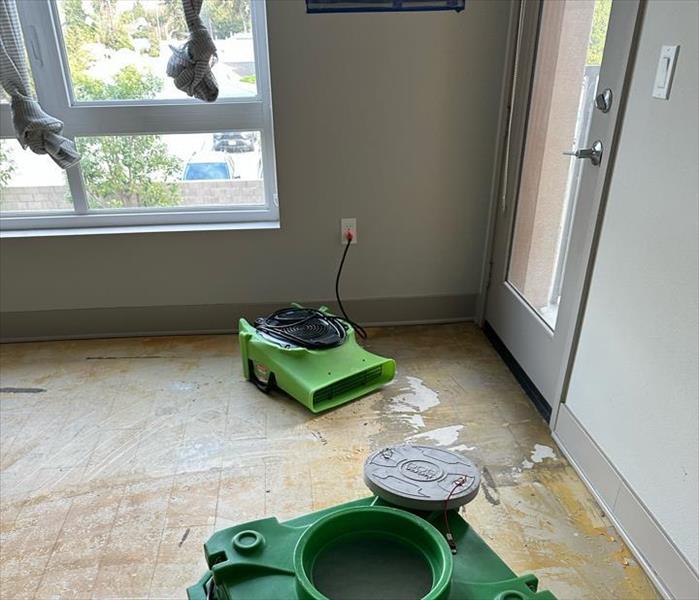 In this blog, we will explore how mold affects home energy efficiency and address mold issues while maintaining an energy-efficient home.
In this blog, we will explore how mold affects home energy efficiency and address mold issues while maintaining an energy-efficient home.
When it comes to maintaining a comfortable and energy-efficient home, many factors come into play. One often overlooked factor is the presence of mold. Mold not only poses potential health risks but can also impact your home's energy efficiency. In this blog, we will explore how mold affects home energy efficiency and provide insights on finding the balance between addressing mold issues and maintaining an energy-efficient home.
Understanding the Impact of Mold on Energy Efficiency
Insulation Reduction: Mold growth can deteriorate the insulation within walls, ceilings, and floors. As a result, the thermal resistance of your home decreases, causing heat transfer and energy loss. This means that your heating or cooling system would have to work harder, resulting in increased energy consumption and higher utility bills.
Air Infiltration: Mold growth often occurs in areas with excess moisture, such as basements, attics, and crawl spaces. These areas are also prone to air leaks, allowing air to enter or escape your home. Mold contamination can exacerbate this issue by creating gaps and cracks, leading to additional air infiltration. Consequently, your HVAC system has to compensate for the temperature imbalances caused by mold, leading to energy wastage.
Dampness and Condensation: Mold thrives in damp environments, which increases the moisture content within your home. This excess moisture can lead to condensation on windows, walls, and ceilings. When left unchecked, condensation can contribute to mold growth and create an energy-draining cycle. Moisture control, alongside mold remediation, is crucial to reducing the energy demands of your home.
Finding Balance: Mold Restoration and Energy Efficiency Tips
Mold Inspection: Regular inspection for mold at home is essential for ensuring energy efficiency. Look for signs of water damage, musty odors, or visible mold growth. Early detection can help prevent extensive mold damage and maintain a comfortable living environment.
Moisture Control: Addressing any sources of excess moisture is vital. Repair leaks, improve ventilation, and use dehumidifiers in areas prone to dampness. By reducing humidity levels, you can inhibit mold growth and create a more energy-efficient home.
Proper Ventilation: Adequate ventilation is crucial for maintaining a balanced indoor environment. Improve ventilation in bathrooms, kitchens, and laundry rooms to control moisture levels and discourage mold growth. Incorporating energy-efficient ventilation systems can enhance both air quality and energy efficiency.
Professional Mold Remediation: If you discover mold in your home, it is important to seek professional mold restoration services. Trained professionals, like SERVPRO®, can properly assess the extent of mold damage and perform effective mold remediation, eliminating the problem at its source. This not only restores your home but also ensures a healthier and more energy-efficient living space.
Mold in Your Home
Mold not only poses risks to your home’s structure but can also impact your home's energy efficiency. By understanding the way mold affects your home and taking preventative measures, you can strike a balance between mold restoration and maintaining a comfortable and energy-efficient living environment. Regular inspections, moisture control, proper ventilation, and professional mold remediation are key steps to achieve this balance. Remember, mold remediation is an investment in both your home's energy efficiency and your peace of mind.
Preventative Home Maintenance to Shield Against Future Water Damage
2/19/2024 (Permalink)
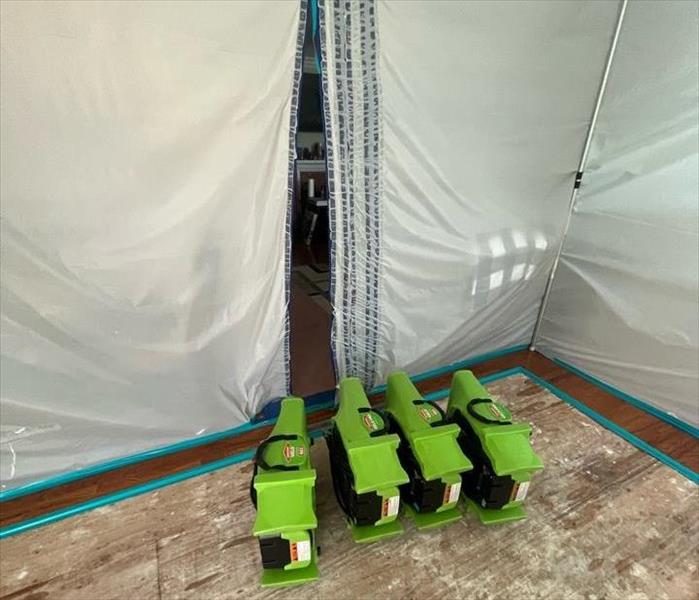 Embracing preventative home maintenance might not grant you a superhero cape, but it sure will keep water-damage villains at bay.
Embracing preventative home maintenance might not grant you a superhero cape, but it sure will keep water-damage villains at bay.
Welcome to the world of proactive home ownership, where a stitch in time saves more than nine. Let's unravel the practical magic of preventative home maintenance to keep water damage at bay. No mystical spells here, just some straightforward tips to protect your home from water intrusion.
1. Gutter Maintenance
Your gutters are the silent heroes of home maintenance. Regularly clear them of debris like leaves and twigs – anything that might hinder water flow. This simple act prevents water from pooling on your roof and ensures it's directed away from your foundation, protecting it from potential water damage.
2. Sealing Cracks and Gaps
Flashing, those humble metal strips, are your allies in the battle against water intrusion. Inspect and maintain the flashing around your windows, doors, and roof. These unassuming metal strips seal cracks and gaps, hindering water's attempts to sneak into your home and cause damage.
3. Inspect Foundation
Your foundation is the stronghold of your home, and it deserves a clear perimeter. Ensure that the area around your foundation slopes away, directing rainwater and runoff harmlessly away from your home. This simple landscaping trick prevents water from pooling around your foundation, reducing the risk of water seeping in.
4. Plumbing Vigilance
Your plumbing is the lifeblood of your home, and even they need regular check-ups. Inspect for leaks under sinks, around appliances, and in the dark corners of your basement. Promptly address any drips or puddles, and you'll be one step closer to preventing water damage.
5. Roof Maintenance
Your roof stands as the main guardian against the elements. Regularly inspect it for missing shingles, damaged flashing, or any signs of wear and tear. A well-maintained roof ensures that raindrops remain outdoors.
Embracing preventative home maintenance might not grant you a superhero cape, but it sure will keep water-damage villains at bay. Consistent inspections and a touch of DIY magic can protect it from the silent but destructive forces of water. Remember, a little maintenance today keeps the flood away tomorrow!
3 Tips to Protecting Your Electrical Equipment During Thunderstorms
1/14/2024 (Permalink)
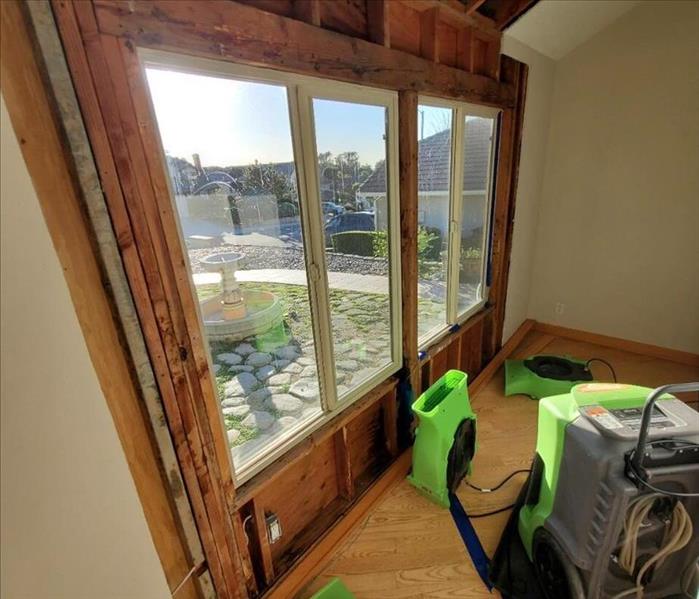 In the unfortunate event that your property experiences storm-related damage, including electrical issues, contact SERVPRO of Whittier today!
In the unfortunate event that your property experiences storm-related damage, including electrical issues, contact SERVPRO of Whittier today!
Thunderstorms can wreak havoc on electronic devices and appliances, causing irreparable damage if proper precautions aren't taken. Let’s explore three vital tips to protect your electrical equipment during thunderstorms.
1. Utilize Surge Protectors
Invest in high-quality surge protectors to protect your valuable electrical devices. During thunderstorms, lightning strikes can cause power surges that potentially fry electronics. Surge protectors act as a barrier, redirecting excess voltage away from your equipment.
Tip: Ensure the surge protectors you use are rated for the specific equipment they’re connected to and regularly replace them if they’ve experienced a significant surge.
2. Unplug Electronics During Storms
One of the safest precautions during a thunderstorm is to unplug your electrical devices. This action eliminates the risk of power surges damaging your equipment, especially if lightning strikes nearby or affects the power lines.
Tip: Create a plan for unplugging electronics in advance, especially if a storm is forecasted. This way, you can act swiftly and protect your devices before the storm intensifies.
3. Consider Whole-House Surge Protection
Installing whole-house surge protection can provide an added layer of defense against electrical surges entering your home's wiring. This advanced system can help mitigate the impact of lightning strikes and power surges, protecting all the devices connected to your electrical system.
Tip: Consult with a professional electrician to assess your home's electrical needs and determine the most suitable whole-house surge protection system.
Bonus Tip: Create Emergency Kits for Electronics
Prepare emergency kits with essential items such as backup batteries, surge protectors, and power strips to use during storms. Store these kits in a safe and easily accessible location, ensuring you have the necessary tools to protect your devices if a thunderstorm strikes unexpectedly.
Protecting your electrical equipment during thunderstorms is crucial in preventing costly damage. By implementing these proactive measures, you can significantly reduce the risk of electrical mishaps and ensure the safety of your valuable electronics.
In the unfortunate event that your property experiences storm-related damage, including electrical issues, contact SERVPRO of Whittier for immediate assistance. Our team specializes in storm damage restoration, including addressing electrical damage caused by thunderstorms. Stay safe and keep your electrical equipment protected during thunderstorms!
How to Remove Smoke Damage from Your Clothes and Belongings
12/20/2023 (Permalink)
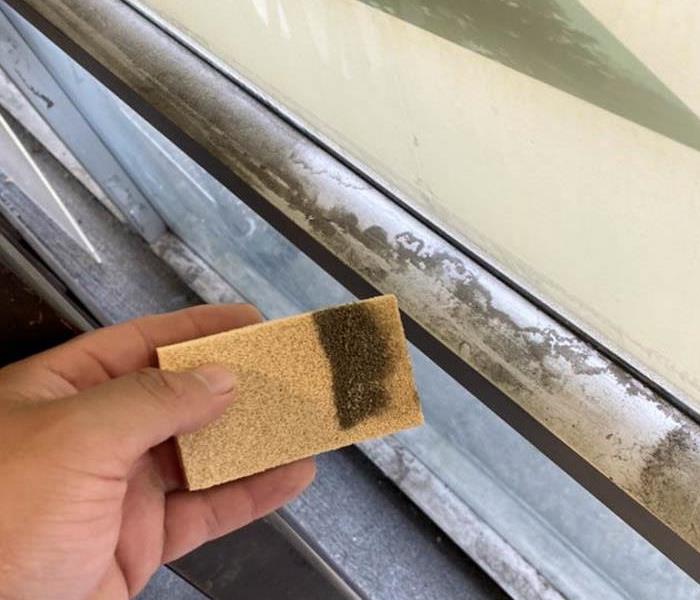 Smoke damage to clothing and personal belongings can be distressing, but with the right approach, you can restore your cherished items.
Smoke damage to clothing and personal belongings can be distressing, but with the right approach, you can restore your cherished items.
Dealing with the aftermath of a fire can be an overwhelming experience, especially when it comes to the smoke damage that can affect your clothing and personal belongings. Smoke can leave behind stubborn odors and stains that seem impossible to remove. In this blog, we'll provide you with effective steps and tips on how to handle smoke damage to your clothing and personal items, helping you restore them to their former glory.
Assess the Damage
Before you begin the cleaning process, it's essential to assess the extent of the smoke damage. Take a close look at your clothing and personal belongings to determine the severity of the smoke odor and staining. This will help you plan the appropriate cleaning methods.
Ventilate and Isolate
The first step in addressing smoke damage is to remove the affected items from the area of exposure. Ensure good ventilation by opening windows or using fans to disperse the smoky air. Isolate the contaminated items from unaffected ones to prevent cross-contamination.
Washable Items: Clothing and Fabrics
- Pre-treat Stains: For clothing and washable fabrics, pre-treat any visible stains with a mixture of white vinegar and water or a commercial smoke odor and stain remover. Follow the product instructions.
- Launder or Dry Clean: Wash clothing and fabrics using a high-quality detergent. Be sure to separate smoke-damaged items from clean ones. If the smoke smell persists after washing, consider a second wash or professional dry cleaning.
- Odor Removal: Use odor eliminators specifically designed for textiles. Hanging clothing outdoors in fresh air and sunlight can also help remove lingering odors.
Non-Washable Items: Personal Belongings
- Dry Cleaning: Many non-washable items, such as leather jackets, handbags, or delicate fabrics, should be taken to a professional dry cleaner experienced in dealing with smoke damage.
- Ventilation: Allow non-washable items to air out by placing them in a well-ventilated area, preferably outdoors. Use fans or dehumidifiers to help circulate the air.
- Baking Soda: For smaller items, like shoes or accessories, place them in a sealed container with baking soda to absorb odors.
Seek Professional Assistance
If smoke damage is extensive or stubborn, consider enlisting the help of professionals like SERVPRO® of Whittier. Our expertise in smoke damage restoration can make a significant difference in restoring your personal items.
Smoke damage to clothing and personal belongings can be distressing, but with the right approach, you can restore your cherished items. By carefully assessing the damage, using appropriate cleaning methods, and seeking professional help when needed, you can rid your possessions of smoke odors and stains. Remember that prevention is key – a well-maintained home and fire safety measures can go a long way in protecting your belongings from the impact of smoke damage.
Why is There Mold in my New Home Construction?
11/13/2023 (Permalink)
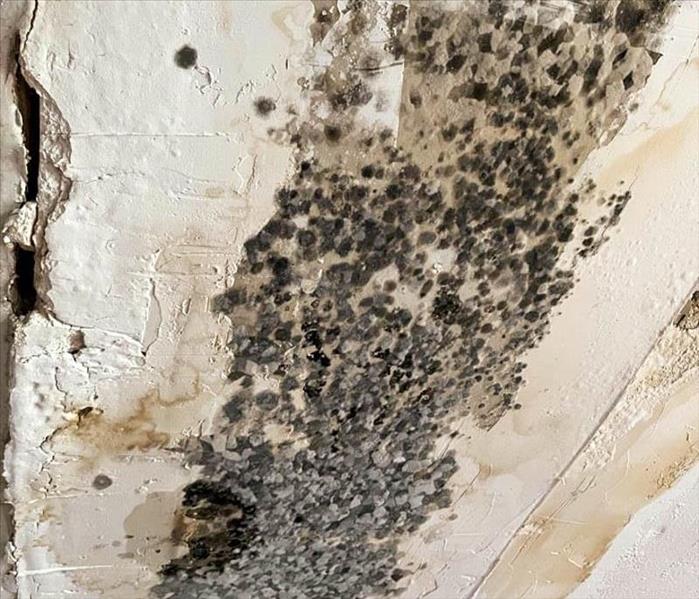 Detecting the issue in its infancy can prevent larger problems down the road.
Detecting the issue in its infancy can prevent larger problems down the road.
While a new home should signify a fresh start, there are times when mold unexpectedly makes an appearance. Understanding the reasons behind this occurrence can help you prevent and address the issue effectively. Let's dive into the world of mold in new home construction.
Why Does Mold Develop in New Home Construction?
One of the most common culprits in mold development is moisture intrusion. During the construction process, water exposure can happen in various ways, from rainwater infiltration to plumbing leaks. If not promptly addressed, these moisture sources can create an ideal environment for mold growth.
Despite being new, construction materials can contain moisture. Materials like wood, drywall, and insulation are particularly prone to retaining moisture. If not properly dried or sealed, they can become a breeding ground for mold.
New constructions may not have a well-established ventilation system in place, leading to poor air circulation. This can trap moisture inside the structure, promoting mold growth in hidden areas.
Construction delays can leave the building exposed to the elements for extended periods. Rain and high humidity can affect the integrity of building materials, providing mold spores with the moisture they need to thrive.
Preventing Mold in New Home Construction
To prevent mold during the construction of your new home, start by incorporating mold-resistant materials and design features into your construction plans. Utilize products like mold-resistant drywall and consider proper grading to direct water away from the building.
Its also a good idea to regularly inspect the construction site for any signs of leaks or water damage. Promptly address these issues to prevent moisture intrusion. Consider investing in a robust ventilation system to maintain optimal humidity levels and minimize moisture buildup.
Remember to work closely with contractors to ensure timely construction completion, reducing the exposure of the building to moisture risks!
Addressing Mold in New Home Construction
Detecting the issue in its infancy can prevent larger problems down the road. Conduct thorough inspections during and after construction to spot any signs of mold growth early.
If you discover mold in your new home, contact SERVPRO® of Whittier for professional mold inspection and remediation. Our experienced team can effectively eliminate mold issues and restore your property to its pristine condition!
Mold's unwelcome presence in new home construction can be a puzzling dilemma for homeowners. However, by understanding the factors that contribute to mold growth, you can take proactive steps to prevent its occurrence and ensure your new home remains a healthy, mold-free environment. Our SERVPRO® team is here to assist with any mold-related situation. For more information or to schedule an inspection, get in touch with us today!
Common Causes of Appliance-Related Water Damage
10/10/2023 (Permalink)
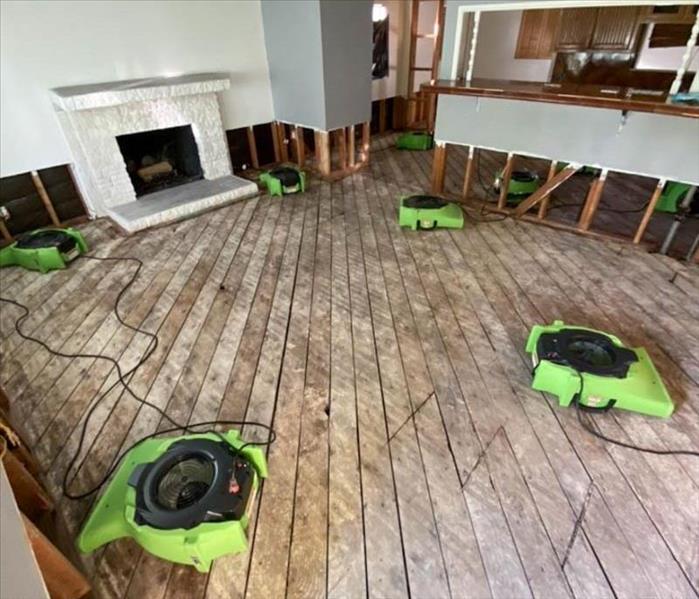 While appliances make our lives more convenient, they can also be a source of unexpected water damage.
While appliances make our lives more convenient, they can also be a source of unexpected water damage.
While appliances make our lives more convenient, they can also be a source of unexpected water damage. In this blog, we'll explore common causes of water damage from appliances in Whittier, California, and provide essential tips to help you protect your home.
1. Faulty Washing Machine Hose
One of the most common culprits of appliance-related water damage is a faulty washing machine hose. Over time, these hoses can develop cracks or weaken, leading to leaks. Regularly inspect your washing machine hoses for signs of wear, and replace them every five years as a preventive measure.
2. Dishwasher Leaks
Dishwashers can also be prone to leaks, often due to worn gaskets, damaged seals, or loose connections. Inspect your dishwasher regularly and address any leaks promptly to prevent water damage to your kitchen and surrounding areas.
3. Refrigerator Water Line Issues
Refrigerators with ice makers and water dispensers have water lines that can become damaged or develop leaks. Check the water line connections and hoses periodically, and replace them if you notice any signs of wear or leakage.
4. Clogged Drain Lines
Both air conditioning units and washing machines have drain lines that can become clogged with debris or sediment. Regularly clean these lines to prevent overflow and water damage.
5. Water Heater Failures
Water heaters have a limited lifespan, and as they age, they can develop leaks. Regularly inspect your water heater for signs of rust, corrosion, or moisture around the base. If you notice any issues, consider replacing your unit to avoid major water damage.
6. Leaky Refrigerator Drain Pans
Refrigerators have drain pans that can collect condensation. If these pans become damaged or cracked, they can leak water onto your kitchen floor. Inspect your refrigerator's drain pan and replace it if needed.
7. Regular Maintenance
To prevent appliance-related water damage in Whittier, it's essential to perform regular maintenance on your appliances. Check hoses, connections, seals, and drain lines periodically, and address any issues promptly.
8. Install Water Leak Detectors
Consider installing water leak detectors near your appliances that are prone to leaks. These devices can alert you to leaks before they cause significant damage, allowing you to take preventive action.
In Whittier, California, appliances are essential to our daily lives, but they can also be a source of unexpected water damage. By staying vigilant, performing regular maintenance, and addressing issues promptly, you can protect your home from appliance-related water damage. Remember, if you ever experience water damage in your Whittier home, SERVPRO® of Whittier is here to help. Our team specializes in water damage restoration and can assist you in returning your home to its pre-damage condition. Stay proactive and enjoy the convenience of your appliances while keeping water damage at bay.
DIY vs. Professional Storm Damage Restoration in Whittier
9/18/2023 (Permalink)
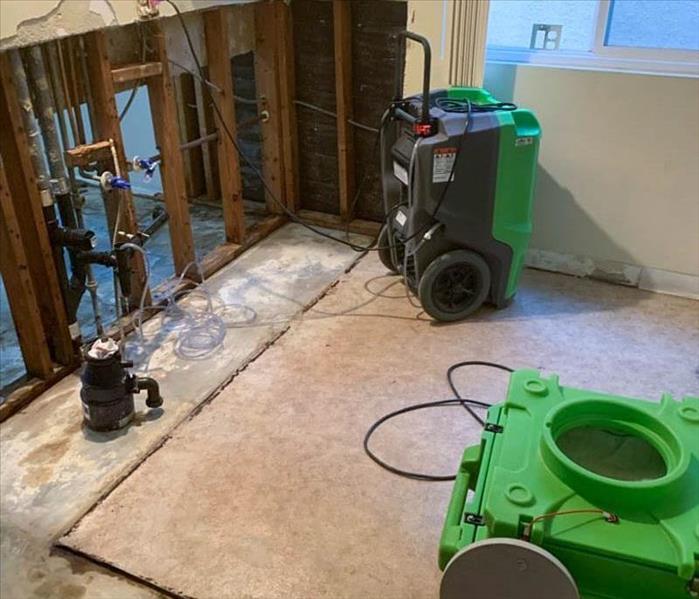 Our skilled team is equipped to handle all aspects of restoration, from assessment to recovery, ensuring your property is in capable hands.
Our skilled team is equipped to handle all aspects of restoration, from assessment to recovery, ensuring your property is in capable hands.
Embarking on the journey to restore your property after a storm can be a daunting task. In this article, we dive into a common quandary that homeowners often grapple with: Is it best to take the DIY route or seek professional storm damage restoration services? When nature unleashes its fury, having the right approach to restoration can make all the difference. So, let's delve into the depths of each avenue, considering the advantages and disadvantages, to empower you in making a well-informed decision for your Whittier property.
DIY Storm Damage Restoration: Pros and Cons
Pros:
Cost-Effective: DIY restoration might seem more budget-friendly at first, as it allows you to avoid upfront professional fees.
Immediate Action: When minor damage occurs, you can take immediate action without waiting for professionals to arrive.
Personal Satisfaction: Successfully repairing your property can bring a sense of accomplishment and ownership.
Cons:
Limited Expertise: DIY restoration lacks the specialized knowledge and techniques that professionals bring to the table.
Risk of Mistakes: Inadequate repairs can lead to further damage or health hazards, costing you more in the long run.
Safety Concerns: Handling storm-damaged structures can be dangerous without proper training and equipment.
Professional Storm Damage Restoration: Advantages and Considerations
Advantages:
Expertise: Professional services offer specialized knowledge and experience, ensuring thorough and effective restoration.
Comprehensive Approach: Experts assess hidden damage, provide tailored solutions, and ensure all aspects are addressed.
Safety: Trained professionals handle hazardous materials, ensuring your safety and that of your property.
Considerations:
Cost: Professional restoration involves upfront costs, but it often saves you money by preventing future issues.
Time: Restoration experts work efficiently, saving you time and allowing you to return to normalcy sooner.
Peace of Mind: Knowing your property is being restored by skilled hands can alleviate stress during a challenging time.
Making the Right Choice for Your Whittier Property
In the end, the decision between DIY and professional storm damage restoration depends on the extent of the damage, your skills, and your comfort level. While DIY might be suitable for minor repairs, professional services are highly recommended for substantial damage. The expertise, efficiency, and safety offered by professionals like SERVPRO of Whittier can ensure your property is restored to its pre-storm condition.
For comprehensive storm damage restoration services in Whittier, trust the experts at SERVPRO of Whitter. Our skilled team is equipped to handle all aspects of restoration, from assessment to recovery, ensuring your property is in capable hands.






 24/7 Emergency Service
24/7 Emergency Service





